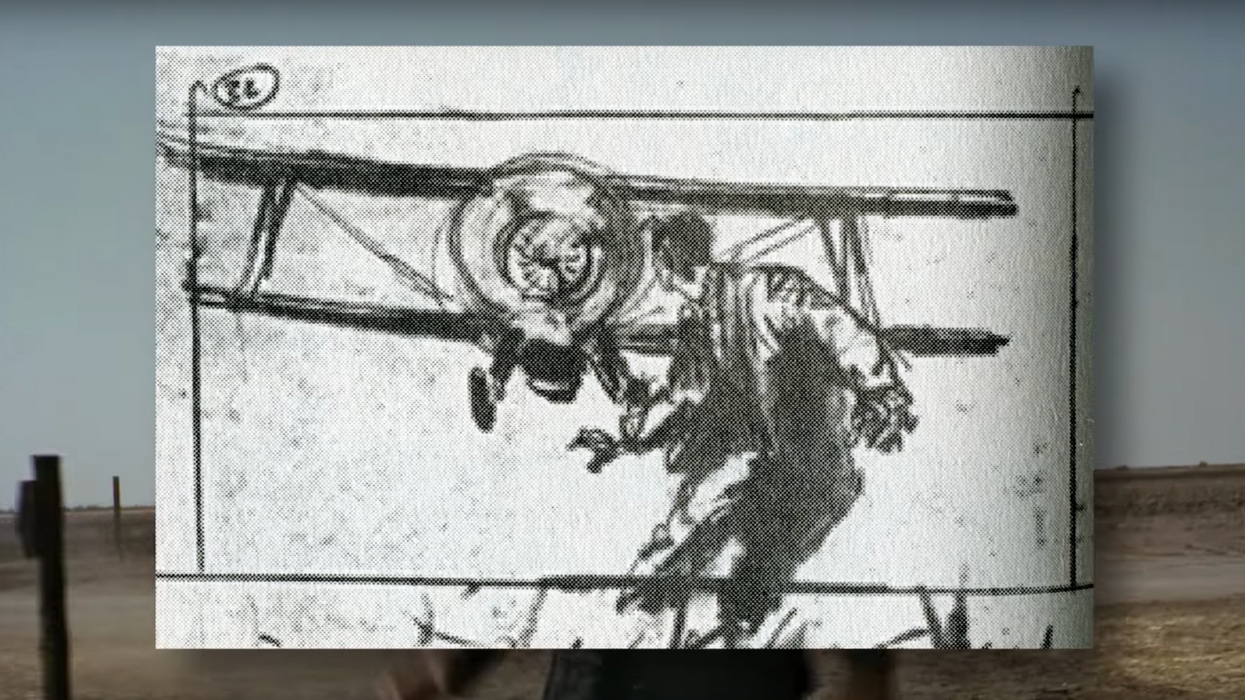How Did Hitchcock Make the 'Crop Duster' Scene in 'North by Northwest' Work So Well?
Alfred Hitchcock managed to turn an empty cornfield into a white-knuckled death trap. How did you do it?

As one of the most celebrated filmmakers of all time, Alfred Hitchcock's work has been examined and studied extensively for almost 100 years. (100 years!? I surprised myself when I wrote that just now.) However, one of the most famous aspects of his brand of filmmaking is his impeccable ability to create tension on screen in the most creatively economic way possible, and one scene that truly demonstrates that ability is the "crop duster" scene from his 1959 mystery thriller, North by Northwest.
In this video essay, Tyler Knudson of CinemaTyler goes over the many different elements at play in the scene, including the sparse setting, Cary Grant's wardrobe, and the minimal use of sound, in order to explain how tension can be created in ways that don't always necessitate the use of common genre tropes.
Hitchcock is called the Master of Suspense for a reason. Where most directors would use things like suspenseful music, quick editing, and "monster POV," Hitch had a knack for injecting a seemingly benign scene with incredible tension using innocuous things like eyeline, location, and yes, a crop duster flying above a well-dressed man standing in a cornfield.
So, let's go over some of the elements that Hitchcock used to make the 'crop duster' scene so tense.
The empty cornfield
One of the first things you should know about this famous scene is that its location is supremely instrumental in the way it functions. Switch it out for a crowded city block, a parking lot at night, or a vast forest, it's not going to work the same. The emptiness of the location is what gives Cary Grant's character, Thornhill, nowhere to hide from an attack. He can't disappear into the woods or duck into a bodega. In the same vein, his attacker has nowhere to hide either, which means that Thornhill, as well as the audience, will see him coming from miles away.
And that spacial relationship is one of the main drivers of the tension in this scene. Hitchcock once said, "There is no terror in the bang, only in the anticipation of it." If both parties, Thornhill and his attacker, were able to hide from each other, the nature of their initial confrontation would be a surprise, or a "bang," which wouldn't result in much tension. The fact that Hitchcock puts their showdown right smack dab in the middle of nowhere forces Thornhill and the audience to not only wait to actually recognize the threat of danger but also be confused by it once it's there. Where do you run? Where can you hide? Literally nowhere.

Thornhill's attire
Another element that's at work in this scene is the juxtaposition of what Hitchcock describes as "the ordinary and extraordinary." There is a vast prairie that is completely empty except for a patch of corn, two roads, and a man. Nothing unusual there, however, when you add the fact that the man is wearing a business suit, everything suddenly changes. Now the audience asks, "What is a well-dressed man doing in an empty field?" That question is what helps build more tension. It may be a seemingly small contributor to the scene, but Hitchcock proves here that wardrobe clearly has incredible cinematic power.
Sound (or lack thereof)
Hitchcock has been known to try new, creative things with sound, audio, and music in his films; one of the most famous of examples of this being the shower scene in Psycho where only the sound of screeching violins was used to pair with the murder of Marion Crane. In North by Northwest, he does something similar. Hitchcock decides to forgo music and go with sound effects instead, namely the crop duster flying in the distance. What's interesting about that choice is that the entire time we're watching that scene, we hear the sound of the crop duster engine overhead; the threat is always looming overhead. Then, when the confrontation occurs and Thornhill runs for cover, we're still forced to "stay with him" in a way, because there isn't a song or score to elevate us from the on-screen moment. We're stuck within the diegesis with Thornhill, forced to run alongside him in real time as he tries to find cover.
There are certainly more elements at work in North by Northwest's famous crop duster scene. Which ones do you think added to the tension? Let us know down below.
Source: CinemaTyler












